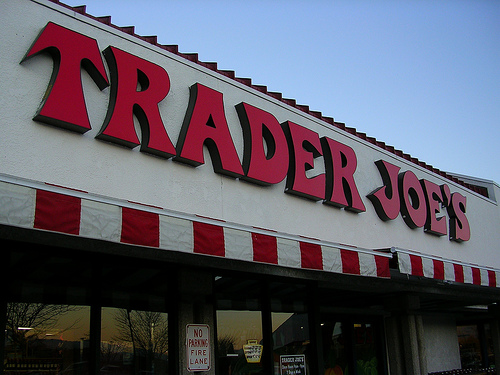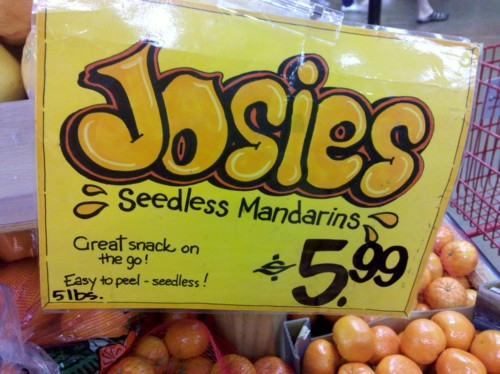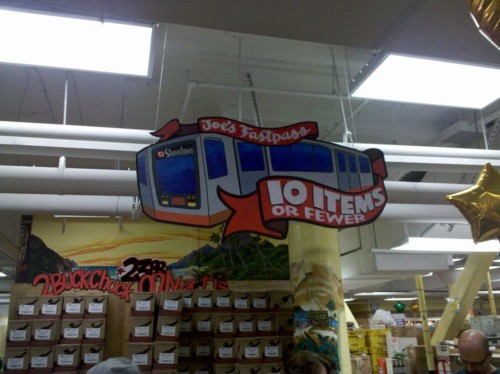How to have personality: Lessons from Trader Joe’s 1.4 million price tags

Trader Joe’s knows marketing. They don’t want you to know this however. Their displays, signage, and advertising (including their kitschy “Fearless Flyer” newsletter) all convey the message that Trader Joe’s is just like the simple grocery store of yesteryear–healthy food, friendly staff, and a store that has a personality.
Nothing demonstrates this better than the beautifully hand-drawn price tags that adorn every product display in the store. That’s right folks–in this era of nearly ubiquitous digitization, Trader Joe’s hand-draws every single price-tag. Keep in mind it’s not just numbers and text, but often artistic elements, depictions of food, and other designs. They are amazing.

Based on some numbers sourced by Fortune Magazine, there are roughly 4000 SKU’s (stock keeping units) in a typical Trader Joe’s store. As of April 2011, there were 355 Trader Joe’s locations across the US. That means that there are over 1.4 million hand-drawn price tags–price tags that will change and need to be recreated based on season, promotion, and price fluctuations.
Who makes them?
According to an employee I spoke with at a San Francisco location, there are 4-5 artists on staff for that given store, who work full-time on producing artwork. I had a friend ask for a job application, and the manager said they were on the lookout for artists that do good, fast work. Wait. Trader Joe’s is actively looking for artists? Isn’t the job of creating in-store art best left to a graphic designer at TJ’s headquarters?
Why hire artists?
One of the key elements of any Trader Joe’s location is it’s strong ties to the local community, which furthers it’s ‘small-town grocery’ feel. Artists are able to incorporate depictions of local geography, places of interest, and subtleties that an employee in Monrovia, California (Trader Joe’s HQ), would have never heard of.

Having a personality is part of the plan
Trader Joe’s is a Fortune 500 giant. They generated sales in excess of 8 billion dollars in 2009. However, you don’t get that feeling inside a store. The illusion is a cleverly orchestrated masterpiece. I don’t say this as a critique of their model, because I am a loyal customer that eats up every bit of their marketing. They could clearly afford to follow every other major grocery chain, but their decision to hire local artists is an expensive, conscious, and brilliantly astute one.
Now back to you: Does your company have a pulse?
If a company with 5500 employees can feel human, then your startup of 10 or 5 or maybe just 1 person needs to feel human too. I don’t think that customers necessarily want to find new friends through the businesses they work with or shop at, but they certainly want to make sure they see signs of life. If you want some more examples of online companies that do this well, here’s a brief list:
- Zappos - a joke of the day over the phone. Just call (800) 927-7671 and follow the prompts.
- Woot - pretty much any writing they do is the best. For a stellar example see Woot Minions.
- Groupon - before they did Super Bowl commercials, they did this.
Any more suggestions? Post a comment or send me an email.